- Administrator
- Albums and Singles
 The irascible and idiosyncratic Michael Hurley has left an alternately memorable and inconsistent wake of releases behind him in his 40+ years of toiling in folk music's lunatic fringe, but he seems to be in the midst of a creative renaissance as of late. This eclectic, lived-in batch of songs is nothing revelatory, but oozes with shambling, offbeat charisma nonetheless.
The irascible and idiosyncratic Michael Hurley has left an alternately memorable and inconsistent wake of releases behind him in his 40+ years of toiling in folk music's lunatic fringe, but he seems to be in the midst of a creative renaissance as of late. This eclectic, lived-in batch of songs is nothing revelatory, but oozes with shambling, offbeat charisma nonetheless.
Michael Hurley's second release for the Gnomonsong label is a creaky and charmingly relaxed collection of covers, Hurley classics, and new material. Michael’s choice to collaborate with Ida and their friends seemed a bit odd to me at first, as his oft-wacky and sloppy aesthetic is quite dissimilar to Ida’s somber introspection. Unexpectedly, however, there is quite a bit of chemistry between them: Hurley’s songs benefit quite a bit by being backed by such a group of skilled musicians and Daniel Littleton and Elizabeth Mitchell’s penchant for all things slow and sad often brings an unexpected emotional depth to Snock’s eccentric lyricism. Also, it is extremely endearing to hear the Ida gang loosen-up, embrace their inner hillbillies, and kick out some swinging countrified jams (they even hoot like owls during “Hoot Owls”).
The strongest songs, appropriately enough, are the gems culled from Hurley’s own back catalogue. The shuffling, forlorn “Wildegeeses” is the album’s clear highlight, as yodeling, whistling, and melancholy female backing vocals, harmonium, and steel guitar beautifully enhance Michael’s heartbroken vocals. Also, the slowed-down pace and haunting viola/violin work from Hurley and Jean Cook transform 1977’s “Hog of the Forsaken” into something darker and more powerful than the original. Of course, that darkness is the exception rather than the rule (this being Michael Hurley album after all), so there is also a great deal of irreverence and absurdity, such as the scat faux-trumpet solos (yes, plural) in Fats Domino’s “Valley of Tears,” the cheeky ‘50s homage “Going Steady,” or the rollicking cover of the Ames Brothers’ howlingly inane “Rag Mop.” Fortunately, Hurley’s sometimes cloying wackiness is much more palatable than usual with Ida’s able backing and the more mindless moments are well-balanced by more substantial fare (particularly the traditional Irish medley “Loch Lomond/Molly Malone”).
While there is no new material here that is as strong as the highlights from 2007’s sparse Ancestral Swamp, Ida Con Snock does not make any pretensions of being a bold artistic statement: this session is essentially just a bunch of like-minded musicians getting together to play some songs that they love, but the enthusiasm, unpolished charm, and informal back porch vibe of it all is difficult to resist. Rather than mellowing or fading into irrelevance, Hurley seems to only get more and more charismatic with age.
Samples:
Read More
- Administrator
- Albums and Singles
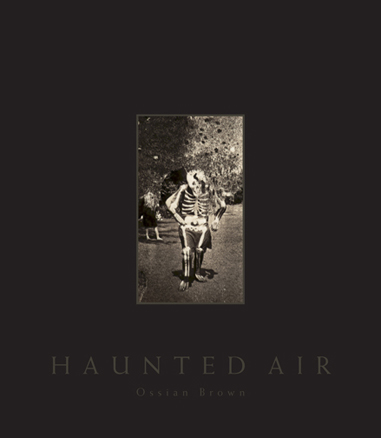
Ossian Brown's first book “Haunted Air” is published by Jonathan Cape in the UK on the 28th October. Focussing on Ossian's phantasmagorical collection of early Hallowe'en photography, America c. 1875 - 1955, his unique and extraordinary book comes with an introduction by David Lynch and an afterword by Geoff Cox. “Haunted Air” is available for pre-order from the Random House website.
“The roots of Hallowe’en lie in the ancient pre-Christian Celtic festival of Samhain, a feast to mark the death of the old year and the birth of the new. It was believed that on this night the veil separating the worlds of the living and the dead grew thin and ruptured, allowing spirits to pass through and walk unseen but not unheard amongst men. The advent of Christianity saw the pagan festival subsumed in All Souls’ Day, when across Europe the dead were mourned and venerated. Children and the poor, often masked or in outlandish costume, wandered the night begging ‘soul cakes’ in exchange for prayers, and fires burned to keep malevolent phantoms at bay.
From Europe, the haunted tradition would quickly take root and flourish in the fertile soil of the New World. Feeding hungrily on fresh lore, consuming half-remembered tales of its own shadowy origins and rituals, Hallowee’en was reborn in America. The pumpkin supplanted the carved turnip; costumes grew ever stranger, and celebrants both rural and urban seized gleefully on the festival’s intoxicating, lawless spirit. For one wild night, the dead stared into the faces of the living and the living, ghoulishly masked and clad in tattered backwoods baroque, stared back.”
The photographs in Haunted Air provide an extraordinary glimpse into the traditions of this macabre festival from ages past, and form an important document of photographic history. These are the pictures of the dead: family portraits, mementoes of the treasured, now unrecognisable, other. Torn from album pages, sold piecemeal for pennies and scattered, abandoned to melancholy chance and the hands of strangers.”
Read More
- Administrator
- Albums and Singles
Diane Cluck - Oh Vanille / Ova Nil
180g audiophile vinyl
Diane's first release on 12" vinyl November 2010 ( reissue )
Oh Vanille / Ova Nil has been reissued on 180g audiophile vinyl, pressed by 3 Syllables Records in Cardiff, Wales. The album has been mastered by the legendary Ray Staff at Air Studios in London and includes two unreleased bonus tracks.
The record is packaged in double weight card stock with embossed titles and a full color, double weight inner sleeve with song lyrics.
The records are in stock and are now shipping.
1. all i bring you is love
2. half a million miles from home
3. telepathic desert
4. easy to be around
5. the turnaround road
6. sandy ree
7. bones and born again
8. petite roses
9. held together (let go if you will)
10. yr million sweetnesses
11. wild deer at dawn
12. EZ demo*
13. gedifra*
*previously unreleased

Read More
- Administrator
- Albums and Singles
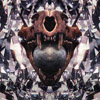 Despite being a duo, Hototogisu have always had the vibe of a recluse within their music. There’s always been a distance and privacy in their sound since Matthew Bower (Skullflower / Sunroof!) and Marcia Bassett (Double Leopards / Zaimph) first teamed up a few records into Hototogisu’s discography. Within the morass of sounds there’s always been a huge human element, but it’s never been a consciously communicative voice. Hototogisu have always been unique in the field of drone rock, pushing competition into either straight up plagiarism or shunting them into reinvention.
Despite being a duo, Hototogisu have always had the vibe of a recluse within their music. There’s always been a distance and privacy in their sound since Matthew Bower (Skullflower / Sunroof!) and Marcia Bassett (Double Leopards / Zaimph) first teamed up a few records into Hototogisu’s discography. Within the morass of sounds there’s always been a huge human element, but it’s never been a consciously communicative voice. Hototogisu have always been unique in the field of drone rock, pushing competition into either straight up plagiarism or shunting them into reinvention.
This is music deeply seated in ritual and purging, a great human heaving of ideas and emotions, but never rooted in structure or the obvious. This Brooklyn / Leeds team-up are charging white horses through crowds of their peers, taking heads nonchalantly as they go. Even their sleeves add to the band’s mythology, from the cult metal logo and alchemically crafted artwork, there’s a focus on the darkly gothic, without the bullshit accoutrements. This cover features a big cat skull gripping a steel ball in front of shards of broken glass, a bizarre but oddly elegant image.
Their back catalogue is in good company with this LP, an astoundingly deep sounding record with minimal electronics and a lot of guitar action. Chimärendämmerung takes the guitar from its obvious forefront position and splits it open like a patient mid-operation. Using its tactility and historical connections to emotional peaks this pair wreck what a guitar is supposed to be for. While the song still squirms, they ride it between ceremonial blasts of drone and lost-in-the-wilderness sandstorm prayers. Bower and Bassett don’t just blow minds for a living; they do it on their weekends too. With Chimärendämmerung they avoid both the piebald wacky instrumentation and shambolic anything-goes of many acts that seem to have been pulled into their wake. There is a very substantial something made here from screaming feedback and patterns from other unidentifiable instruments. This is most clearly heard on the second untitled piece as it layers up a melody under nineteen minutes of high-energy feathered drone. This leaves cataracts of ravaged almost solos sitting happily alongside a snaking echoing alleyway whistle. Everything here sounds organic and alive; this is an album that demands immersion. Within Hototogisu’s flattened tones and squalls of scrap metal there’s an unsettling world underneath, whispering beneath the mess. Even still Hototogisu manage to summon up a cacophony of bell-like waterfalls of noise, but one that’s tempered with hope.
The record’s human heart comes through Bassett and Bower’s obsessive input, the constructed conflict between their instruments and white lightning sheets of energy and. For all the darkness associated with the drones of the band, they never slip into dredging the sounds of senescence and death. Hototogisu skilfully use a dab of metal’s grandeur and mood without all the pomposity (Hello there, Sunn O))))), pitching it into a rootless maelstrom. The three central pieces on the LP are shifting series of explosions of noises book ended by two shorter tracks (all untitled); the programming has each track brickwalling into the next with no gaps. The song’s layers of rise and fall hum and loops of melody work better upon close inspection. The record’s higher tones seem to congregate on the later parts of the record, the buzzing of a thousand corpse flies failing to obscure the scraping viola saws for too long. The prima facie view of something as deceptively rich as Bower/Bassett’s work is often one of a mere onslaught of noise. This pair didn’t build their reps from just sitting back and blasting people rigid in their seats, although they undoubtedly could.
Taking a wider look back at the Hototogisu back catalogue, this is as easily digestible a peak as they’ve ever reached. Bassett and Bower have settled, if you can use that word in association with something so deeply driven, into a majestic furrow of sound. Every sound seems handmade and purposefully placed with this duo, even in the molten heat of the thickest barricades of barbed feedback.
samples:
 
Read More
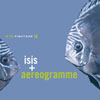 Isis are undeniably one of the most popular hard rock independent label bands in the business while Aereogramme deserve to be right up there with them, headlining mega shows with the same numbers. Both have soft and loud moments, both Aaron Turner and Craig B can coo like a dove and scream like Satan's spawn, but, even as this is one of the best In the Fishtank releases, I'm skeptical if it will gain new fans for either entity.
Isis are undeniably one of the most popular hard rock independent label bands in the business while Aereogramme deserve to be right up there with them, headlining mega shows with the same numbers. Both have soft and loud moments, both Aaron Turner and Craig B can coo like a dove and scream like Satan's spawn, but, even as this is one of the best In the Fishtank releases, I'm skeptical if it will gain new fans for either entity.
- Administrator
- Albums and Singles
 Isis are undeniably one of the most popular hard rock independent label bands in the business while Aereogramme deserve to be right up there with them, headlining mega shows with the same numbers. Both have soft and loud moments, both Aaron Turner and Craig B can coo like a dove and scream like Satan's spawn, but, even as this is one of the best In the Fishtank releases, I'm skeptical if it will gain new fans for either entity.
Isis are undeniably one of the most popular hard rock independent label bands in the business while Aereogramme deserve to be right up there with them, headlining mega shows with the same numbers. Both have soft and loud moments, both Aaron Turner and Craig B can coo like a dove and scream like Satan's spawn, but, even as this is one of the best In the Fishtank releases, I'm skeptical if it will gain new fans for either entity.
Both bands are known for epic monstrosities, so it comes as no surprise that 2/3 of the songs here hover around 10 minutes, but fans who are looking for massive dynamic shifts might feel a little let down. The EP is a technical success: while I was expecting some soup of distortion, the stellar production actually allows for each participant to be truly heard. On the first song, "Low Tide," for example, it slowly evolves over time, with Craig's crooning vocals against the ever powerful bass riff, straight up rock drums, and guitar. Drums and guitar give way to the distorted beats while the bass guitar lingers, ominous, like a heavy pendulum. The power is in the restraint here. We're expecting somebody to break, somebody to burst, but it's possibly a competition between both entities to see who can hold out longest.
"Delial," is once again driven by the killer bass riff, it reaches a peak early but isn't completely overblown with the layered screams, and nicely doesn't let the hum of the guitar pedal trail on and on like a tired cliche. "Stolen" opens like a pleasant Aereogramme ballad with Craig's echoed vocals buried almost entirely in the distance under a marching drum, beats and bass part for a gorgeous mid section with a thump and clap that brings me back to one of my favorite OMD songs (and possibly one of my favorite songs ever), "The Romance of the Telescope." Its vastness is more oceanic than Oceanic, and as it ends with the unexpected sounds of birds at low tide (strangely enough it's not the song titled "Low Tide"), at 10 minutes it feels like it stopped without trailing off needlessly.
What makes this a high-ranking In the Fishtank is that unlike past experiences, it doesn't sound like two bands just fucking around and releasing whatever came out. This has been my problem with things like the ones from Sonic Youth and even Tortoise. It's short, yes, and I would prefer something a bit longer and with a bit more variety, but these excellent 24 minutes sound very nicely following Aereogramme's Seclusion EP, issued over here earlier this year, coincidentally with cover art by Aaron Turner.
samples:
Read More
- Administrator
- Albums and Singles
 The latest release in an impressive line of ‘Merz’ titled releases onImportant may prove to be Merzbow’s most easily enjoyable and finestbeat related work to date. Masami Akita continues to fight thegood fight on behalf of the animal kingdom though his arsenal of noise,static, fury and a trusty drum machine.
The latest release in an impressive line of ‘Merz’ titled releases onImportant may prove to be Merzbow’s most easily enjoyable and finestbeat related work to date. Masami Akita continues to fight thegood fight on behalf of the animal kingdom though his arsenal of noise,static, fury and a trusty drum machine.Important Records
From the cheeky digital pig eating a human hand on the coverto the carnage of the inside artwork Merzbow hints at a context and afocus of animal domination/revenge for the abstract sounds. Althoughthe treble squealing whine on track 1 could never be heard asanything other than the sound of a fully trained up war pig on thecharge. All of the songs here rely heavily on beats and these vary inviolence and intricacy from the growing and ever modifying patternof track 4 to the more straightforwardly moving but complicatedbeat on track 2. The addition of a set structure to the usual punishingnoiseelements takes some of the fire from Merzbow but it also provides a bedfrom which to dig deeper and get lost in the manipulated frequenciesand washes of static. As these brief patterns loop they dig melodicfurrows from the squalls which he then discards with the flick of adial or the clicking of a plug in. Merzbow’s beat making abilities areimproving with every release and this evolution is madeexplicitly obvious on track 3, where the beat moves from a cheap Casioshape to a shuffling stalling dusty locked groove.
There are slightsimilarities in the combination of noise and percussion to the stylesof producers like El-P and Dälek and it can only be a matter of timebefore a Peta approved MC collaborates with Akita. Of course it wouldtake a quite exceptional vocalist to volunteer to attempt to ride themass of blasting sonic debris that is created here.But it’s not all drum and static heaviosity, as behind the black on thesecond and third tracks there’s something smaller and melodic going on.There’s a collection of sounds difficult to pin down in there thatmakes it look like he thought about adding a moreconventional melody to the songs and then just flicked it back into themix. These moments sound both beautiful and odd as they slip to and frothe overwhelming Merzbow abuse. Whether he takes this direction furtheror descends back into his experiments with noise isunknown but his insane work rate means that it won’t be long till it's found out.
samples:
Read More
- Administrator
- Albums and Singles
 Thisguy who seems to care about the welfare of animals and suffers from asevere case of misanthropy has me entranced. Masami Akita'spredisposition to releasing animal-related albums has spawned yetanother record that has perhaps no sonic relation to its title or PETAsponsorship.
Thisguy who seems to care about the welfare of animals and suffers from asevere case of misanthropy has me entranced. Masami Akita'spredisposition to releasing animal-related albums has spawned yetanother record that has perhaps no sonic relation to its title or PETAsponsorship.At certain points listening to Senmaida reminds me of what itmust feel like to be torn to pieces and relocated somewhere else, likestepping into the transporters in all those sci-fi television series. Iused to listen to a Merzbow records a few times a year and then shelvethem for whenever I decided a headache was in order or whenever I feltlike listening to something that would purify my mind and wipe mymemory clean. When "Tract 3" kicks in with it's game-like, poppingrhythm and the call of animal sounds, it's hard to believe that Merzbowhas been doing anything but this for his entire career. This isn't aharsh noise extravaganza, it's simply my favorite Merzbow album to dateand one of the best records I've heard all year.
Save for a few animal sounds clearly tucked away under Akita's monumental barrage of noise splatter, Senmaidais a predominantly rhythmic album that is catchy enough to keep thealbum in my player. The inclusion of beats over his white noise,all-the-sounds-in-a-blender provided a way for Akita to explore his noise further. NowAkita has almost completely eschewed the pure noise approach andcreated something vaguely new so far as my knowledge of the infiniteMerzbow catalogue goes. Don't get me wrong, there are still longstrokes of jumbled chaos riddled all over this disc, but morediscernable samples are used and space is absolutely essential to eachof the three tracks.
The variations in tempo, timbre, and intensity make for a far more interesting album and, instead of sounding simply loud and powerful, Senmaida has a dark feel to it that isn't too far removed from all the dark jungle or drum 'n bass that was popular years back. The beats aren't what is out of control, though, it's the dark, mechanical, nearly industrial pulse of Merzbow's percussion that seems the most sane and consistent part of the record. Above those beatings, however, is the rattle of marbles being chucked around inside the skull of dead animal, the ADD-driven smashing of a billion toms hurtled through a wood cutter with the performer still attached, and all the digital means necessary to pin it all together.
The word "senmaida" literally means "a thousand rice paddies" and, so far as a thematic must go, serves as Akita's way of saying "don't eat animals." The album cover, however, sports a cartoon rabbit shooting a needle into a human's eyeball, the individual being strapped down to a medical bed and looking awfully uncomfortable. I guess Akita has never claimed he was the master of holding down a narrative, but whatever the case may be, this is one of Merzbow's strongest records.
samples:
Read More
- Administrator
- Albums and Singles
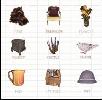 Deerhoof have always done an admirable job of spanning the wide gulfbetween pure pop and pure noise. The most recent release from the San Franciscoquartet is their strongest synthesis of noise and pop yet.
Deerhoof have always done an admirable job of spanning the wide gulfbetween pure pop and pure noise. The most recent release from the San Franciscoquartet is their strongest synthesis of noise and pop yet.Kill Rock Stars
While early recordings were more nowave then they were power pop, albums like Reveille and Apple’O foundthe band stringing the two together, as though it were the most naturalthing in the world, while Milk Man altered the approach, utilizingkeyboards and atmospheric samples. Obviously, it didn’t sound like popmusic to most, but behind the skronky guitars and absurdist tales ofwarped childhoods and bent sexuality, there were great songs. Though it would havebeen enough for them to rest on their achievements of past releases, itseems pretty clear that the band have released their strongestcollection of songs yet.
At 20 tracks, TheRunner’s Four can seem a bit overwhelming, and while the first half ofthe album is seemingly devoted to the band’s more accessible material,the second half is just as rewarding. “Chatterboxes” opens the album with a suitably menacing guitar line andSatomi Matsuzaki’s airy vocals. It’s an understated opener for an albumthat is bursting at the seams with angular guitars and sublime pophooks. More indicative of the album as a whole is “Running Thoughts,” ajazzy number carried by drummer Greg Saunier’s crashing rhythm andslinking guitar that seemingly ebbs and flows through its nearly fourminute duration with hardly any effort. “Spirit Ditties of No Tone” isnear psychedelic in its execution, with Matsuzaki spouting offabsurdist couplets over the acid drenched guitars of John Dieterich andChris Cohen. Throughout The Runner’s Four, Deerhoof’s strong sense ofsurreal storytelling remains intact, such as on the lost pirates’ tale“Odyssey.” Elsewhere, “Lemon & Little Lemon,” bubbling keyboardgives way to brushed percussions and soft vocals.
With The Runner’s Four, Deerhoofseem poised to gain a whole new legion of fans.
samples:
Read More
- Administrator
- Albums and Singles
SAND - Golem

- Special edition LP, limited and numbered to 633 copies
Deluxe heavy duty cover / LP about 200g
- CD Digipak 3 panels
Rotorelief releases, in 2010, a series of new albums from Sand as well as a reissue of their obscure and rare album Golem, and albums by Nurse with Wound and Current 93.
This series of albums from Sand is called “INXOM”, the series title having one letter for each album. So, 5 albums of Sand are to be released.
Two more albums from Nurse with Wound and Current 93, two groups who helped to bring to light the mystery that is Sand, increase the number of letters in the title. With these last two albums the series becomes INXODEM.
His First Steps – Golem - Desert Navigation - Sylph Ballet – North Atlantic Raven. And Chromanatron by Nurse With Wound and When the May Rain Comes, cover versions of Sand by Current 93.
The present album is a reissue of Golem, the legendary album from the cosmic and psychedelic genius that is Sand.
Personnel
Johannes Vester
Ludwig Papenberg
Ullrich Papenberg
Track Listing
Face A :
01. HELICOPTER
02. OLD LOGGERHEAD
Face B :
03. MAY RAIN
04. ON THE CORNER
05. SARAH
Bio
There is something magical and inexplicable in creation, and Sand manifest absolutely these mysterious phenomena. Story-tellers, musicians, shamans, geniuses, Sand were known, at the end of the 60s, as P.O.T. (Part of Time). Then Sand - Ludwig Papenberg and his brother Ullrich Papenberg, and Johannes Vester, developed a more avant-gardist, proto-industrial, visionary experimental approach, a truly unique entity in the history of music.
Not dependant on a classical “Krautrock” style, Sand is nevertheless part of this movement of German cosmic/psychedelic bands, as well as being the originators of proto-industrial musics.
www.rotorelief.com/new-releases/
Read More
- Administrator
- Albums and Singles
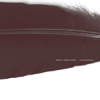 Both of these artists have discographies that consistently combine the worlds of laptop based electronica and the purest, most natural possible human instrumentation into strong, cohesive works, and this collaboration is no exception. With Minamo's blending of folk and experimental electronics and English's penchant for dulcet tones and field recordings, the results are an even more perfect synthesis of the varying styles.
Both of these artists have discographies that consistently combine the worlds of laptop based electronica and the purest, most natural possible human instrumentation into strong, cohesive works, and this collaboration is no exception. With Minamo's blending of folk and experimental electronics and English's penchant for dulcet tones and field recordings, the results are an even more perfect synthesis of the varying styles.
English is a prolific solo artist who has released a large body of work on his own label, as well as a recent 7" on Touch that was uncharacteristically abrasive.After hearing that single, I wasn’t sure what to expect on this collaboration, but he has mostly returned to the sparse, inviting tones and field recordings that I am familiar with.While Minamo's albums on 12k were already rather subdued recordings, here that becomes even more pronounced, leaning more on acoustic guitar and gentle electronics rather than the more kraut inspired leanings on their other albums.
The opener, "The Path," encapsulates the album in a single piece:a foghorn like melody bellows off in the distance as birdsongs appear like gulls by the sea.Then, a soaring harmonium drone and delicate acoustic guitar arrives, complicating the sound but never becoming too dense.The piece builds in complexity, with a relatively thick mix by the end, which somehow manages to be dense, yet spacious at the same time. Many of these elements appear throughout the remainder of the album, but never in a repetitive manner.The field recorded crickets and distant sounds that open "Headlights" suggest the unknown, but in a mysterious, rather than sinister manner.While the opening half is more spacious and ambient, the closing portions focus more on the electronics.
The long "Springhead," which stretches over 17 minutes, is a consistently evolving and mutating piece, first focusing on chimes and long, sustained tones droning on and on, but then later there are buried melodies and complex sound structures to be found, shifting the mood from pensive melancholy to dramatic flourish and back again throughout. The closing "Fireworks," however, is the most bizarre track when placed in context.Compared to the previous song’s careful mixing of subtle electronic sounds with natural, organic guitar notes, this one replaces the cautious notes with fast, raw guitar strums, getting as close to "rocking out" as one could while still retaining a folk context.The track is by no means going into Slayer territory, but is definitely more raucous than the tracks that preceded it, going out with a bang for sure.
While both of the artists are known for blending the worlds of pure, synthetic digital tones and natural, human warmth and instrumentation, the collaboration between them simply serves to magnify these strengths.With Minamo's delicate laptop folk and English's field recordings and careful sense use of droning sounds, the final result is a hazy but welcoming album that never loses its sense of mystery.
samples:
 
Read More

